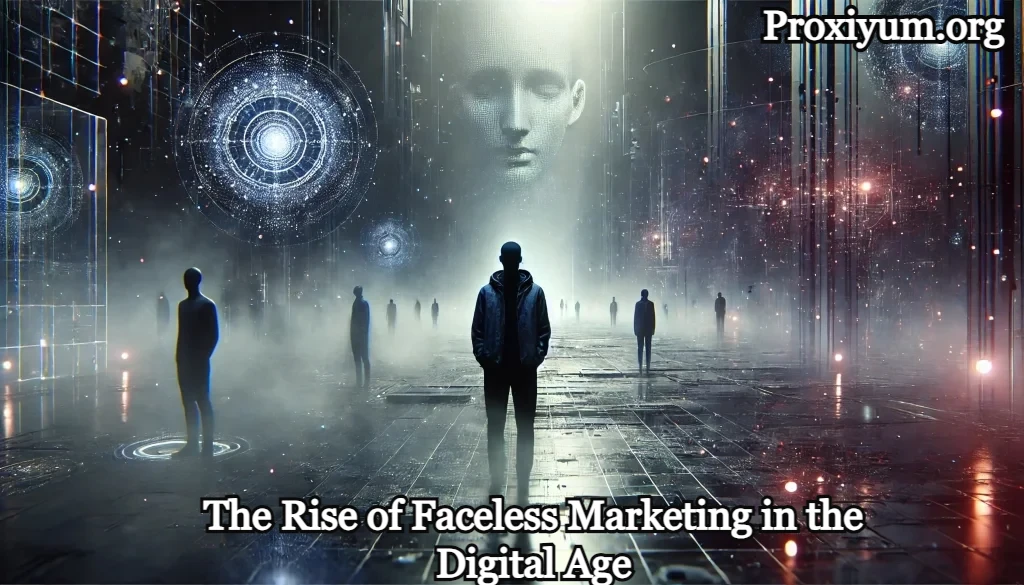Introduction
In a world where personal branding and influencers dominate the marketing landscape, an emerging trend known as faceless branding is capturing the attention of modern businesses.
But what exactly is faceless branding? And why are so many brands opting for a strategy that doesn’t rely on a recognizable human figure?
Faceless branding, as the name suggests, refers to a marketing approach where the brand operates without a defined face or personality to represent it.
Instead of focusing on personal brands or influencers, faceless brands allow their products, services, and stories to take center stage.
The Concept of “bl_faceless”
At the heart of this rising trend is the idea of “bl_faceless,” a marketing term that embodies the idea of stripping away human personas from branding strategies. It’s a concept that emphasizes product quality and brand story over individual figures. This shift towards anonymity allows brands to maintain focus on what truly matters — the value they provide to their audience.
The Rise of Faceless Marketing in the Digital Age


With the increasing use of digital platforms and social media, faceless branding has gained significant traction. Consumers are constantly bombarded with ads featuring influencers, celebrities, and recognizable figures. Faceless brands, on the other hand, offer a refreshing change by taking a more anonymous, product-driven approach.
This kind of branding can be especially effective in niches where the focus is on functionality or performance, such as tech, food products, or software services.
Social media platforms are ideal for faceless brands as they enable seamless communication with audiences without the need for a human face.
The Psychological Appeal of Faceless Branding
So, why do consumers find faceless branding appealing? It taps into the power of mystery. When a brand doesn’t reveal all the details about its creators or representatives, it creates a sense of curiosity. People naturally want to learn more, and this interest can drive engagement.
Additionally, faceless brands can sometimes come across as more authentic. Without the distraction of personalities or figures, consumers can focus on the brand’s values, products, and customer experience.
Case Studies of Successful Faceless Brands
Several well-known brands have adopted the faceless branding approach, finding great success along the way:
- Supreme: While a recognized brand in streetwear, Supreme rarely relies on public figures for endorsements. Its marketing is largely faceless, focusing instead on scarcity and product quality.
- Banksy: The mysterious artist Banksy has mastered faceless branding by letting his work speak for itself, creating immense intrigue and global recognition without ever revealing his identity.
Advantages of a Faceless Brand
There are several key benefits to operating as a faceless brand:
- Focus on Product: Without a celebrity or public figure at the helm, brands can keep the spotlight on the quality of their products or services.
- Reduced Dependency: Faceless brands don’t need to worry about the behavior, controversies, or changing popularity of a figurehead, making them more adaptable and flexible.
- Scalability: Faceless brands can expand and evolve without having to reposition around a specific individual, giving them greater long-term potential.
Challenges Faceless Brands Face
While faceless branding has its perks, it also presents challenges:
- Lack of Personal Connection: Consumers often form emotional connections with people rather than products, so faceless brands need to find other ways to foster that bond.
- Trust Issues: Without a human face, some customers may feel skeptical or hesitant to trust a brand. Building credibility is essential to overcoming this.
- Marketplace Differentiation: Standing out in a crowded market is difficult without a recognizable figure. Faceless brands need unique strategies to create visibility.
How to Build a Successful Faceless Brand
Here are some steps to create a faceless brand that thrives:
- Identify Core Values: Your brand must have a clear message and mission that resonates with your audience. This helps create a strong foundation even without a human representative.
- Craft a Unique Voice: Your brand’s voice should be distinct, whether formal, quirky, or approachable. This voice will be your brand’s “face” in the marketplace.
- Consistency Is Key: A faceless brand must be consistent across all platforms, from social media to website content, to build a strong identity.
Leveraging Content for a Faceless Brand
Faceless brands can use content to tell their story in a compelling way. This includes:
- Storytelling: Narratives about the brand’s journey or the inspiration behind its products help build emotional connections with the audience.
- Educational Content: Providing valuable information through blogs, videos, or infographics can establish your brand as a trusted expert in the industry.
Social Proof Without a Face
Even without a face, social proof can bolster trust. Reviews, testimonials, and case studies from real customers can showcase your brand’s value and reliability.
How to Keep Consumers Engaged with a Faceless Brand
To maintain engagement, faceless brands can:
- Use interactive content like quizzes, polls, and surveys to involve the audience.
- Focus on personalization in marketing messages, using data to tailor recommendations for individual customers.
The Role of Technology in Faceless Branding


Advancements in technology, such as AI and chatbots, make it easier for faceless brands to provide seamless customer service without the need for a human face. Automation can help streamline processes and improve efficiency.
SEO and Faceless Brands: A Winning Combination
A faceless brand needs to leverage SEO effectively. Creating high-quality, keyword-rich content is essential for increasing visibility. Optimizing blog posts, product pages, and metadata can boost rankings without relying on a personality.
Future Trends in Faceless Branding
As consumer preferences continue to evolve, faceless branding is expected to grow in popularity. The focus will likely shift more towards transparency, sustainability, and community-driven marketing as brands seek to connect with conscious consumers.
Conclusion
Faceless branding is an innovative approach that allows businesses to focus on their products and values rather than on a personality.
While it comes with challenges, the potential for building trust, scalability, and adaptability make it an attractive option for many modern brands. If done correctly, faceless branding can have a profound impact on your business’s success.
